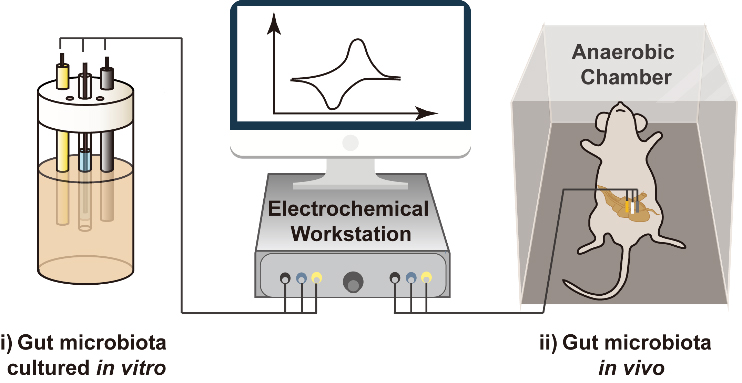Department of Chemical Biology
Yang's Lab,Department of Chemical Biology, Xiamen University
Professor Yang
 Know more>>
Professor
Department of Chemical Biology, Xiamen University
Know more>>
Professor
Department of Chemical Biology, Xiamen University
Contact Information
Yang's LaboratoryRoom 532, Lujiaxi Building, College of Chemistry and Chemical Engineering, Xiamen University, Xiamen 361005, China
Ph: +86 (0) 592-218 7601cyyang@xmu.edu.cn
Gut bacteria extracellular electron transfer work accepted by Anal. Chem.
2019-09-13 03:16:09

ABSTRACT:As a well-studied biochemical reduction process in environmental microbiology, extracellular electron transfer (EET) was recently discovered in bacteria closely related to human health, and orthologues of a flavin-based EET gene were found in the genomes of many species across Firmicutes, a major phylum in mammalian gut microbiota. However, EET has not yet been confirmed to occur in mammalian gut, the presence of which may have broad physiological influences. Towards this end, here we first confirmed the occurrence of EET in mouse gut microbiotas cultured in vitro. Cyclic voltammetry analysis was then performed by directly inserting electrodes into the mouse cecum under anaerobic conditions, and a characteristic catalytic wave was observed in the gut of conventional, but not germ-free mouse, proving the existence of in vivo bacterial EET. We also detected similar catalytic waves in the cecal microbiotas of rat and guinea pig in vivo, suggesting EET's high prevalence in mammalian intestines. Our finding on the bacterial electron production in mammalian guts offers a new bioelectrochemical scope for deciphering the complex microbiology of gut bacteria and its effects on host physiology.
